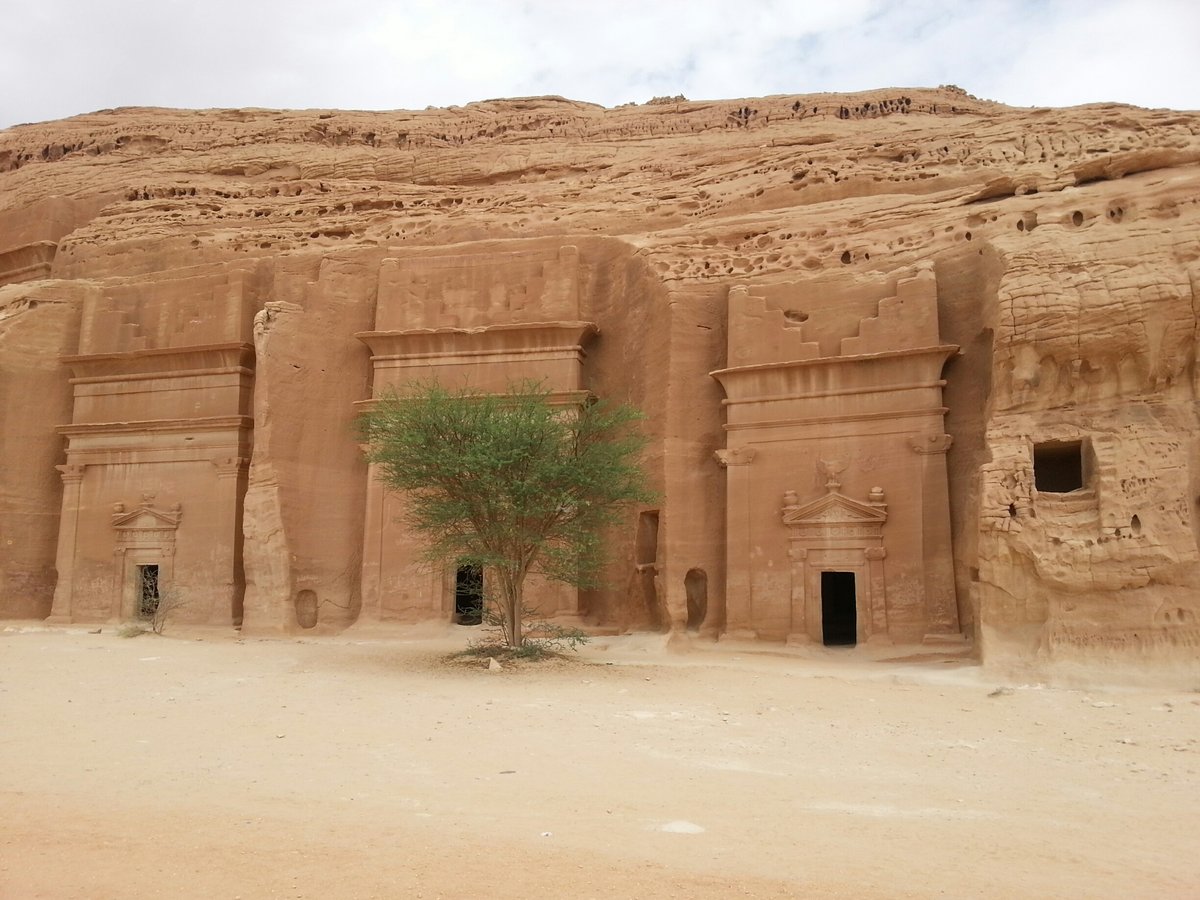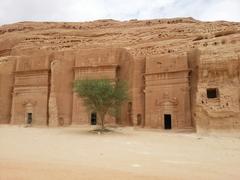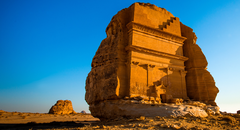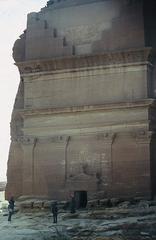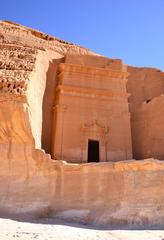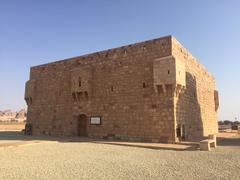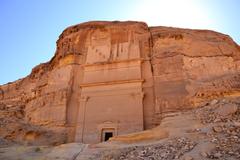Hegra Visiting Hours, Tickets, and Historical Sites in Medina Province, Saudi Arabia
Date: 14/06/2025
Introduction
Hegra—also known as Al-Hijr or Mada’in Salih—is a UNESCO World Heritage Site nestled in the striking desert landscapes of Saudi Arabia’s Medina Province. As the first Saudi site to gain UNESCO recognition, Hegra stands as an enduring testament to the ingenuity and artistry of the Nabataean civilization, with over a hundred monumental tombs, intricate inscriptions, and sophisticated water management systems. Situated approximately 22 kilometers north of AlUla, Hegra was a vital outpost on the ancient Incense Route, linking southern Arabia with the Mediterranean world. Today, it is a must-see destination for history enthusiasts, archaeology scholars, and curious travelers alike.
This detailed guide covers Hegra’s historical background, visiting hours, ticketing information, guided tour options, accessibility, and essential travel tips. It also highlights nearby AlUla historical sites to maximize your journey through Saudi Arabia’s rich archaeological heritage.
For up-to-date visitor information and official resources, refer to the UNESCO World Heritage site on Hegra and the Experience AlUla portal.
Contents
- Introduction
- Historical Background
- Key Archaeological Features
- Visiting Hegra: Practical Information
- Nearby AlUla Historical Sites
- Frequently Asked Questions (FAQ)
- Conclusion and Call to Action
- References
Historical Background
Early Settlement and Pre-Nabataean Cultures
Hegra’s history extends back millennia. The valley of Wadi Al-Qura, where Hegra lies, was a fertile oasis and a crossroads for ancient trade routes, attracting early settlers. Archaeological evidence points to the presence of Lihyanite and Dadanite kingdoms before the Nabataeans, as seen in inscriptions and rock art throughout the region (Saudipedia). These early societies utilized advanced water management, allowing life to flourish in the arid environment.
Nabataean Era: Trade and Monumental Architecture
The Nabataeans, originally nomadic Arabs, established Hegra as their southern capital in the 2nd century BCE. The city prospered as a trading hub on the Incense Route, facilitating the movement of frankincense, myrrh, and luxury goods between southern Arabia and the Mediterranean (World Atlas; UNESCO). Hegra became the second-largest Nabataean city after Petra in Jordan.
Hegra’s 111–116 rock-cut tombs, including the iconic Qasr al-Farid, showcase a blend of artistic influences—Egyptian, Assyrian, Hellenistic, and Arabian—attesting to its cosmopolitan nature. The city’s inscriptions in Nabataean, Lihyanite, Thamudic, and Latin highlight the cultural exchanges fostered by its strategic location (World Heritage Sites).
Roman and Islamic Periods
In 106 CE, the Nabataean Kingdom was annexed by the Roman Empire. Although Hegra continued as a center of trade for a time, shifts in trade routes led to gradual decline. Islamic tradition associates Hegra with the Thamud people, contributing to its abandonment. Later, the Hejaz Railway station, built in the early 20th century, underlined the site’s ongoing strategic value (Saudipedia).
Rediscovery and Conservation
Modern archaeological interest began in the 19th and 20th centuries, culminating in Hegra’s UNESCO inscription in 2008. Since then, Saudi authorities have prioritized conservation, making Hegra an open-air museum with robust visitor facilities and ongoing research (Hegra Conservation; Experience AlUla).
Key Archaeological Features
- Qasr al-Farid: The “Lonely Castle,” a massive unfinished tomb standing 22 meters high, is Hegra’s most famous monument (The Other Paths).
- Jabal al-Banat: A cluster of 29 tombs, many with inscriptions indicating female ownership, providing unique insights into Nabataean society.
- Jabal Ithlib: Religious center with Al Diwan, a rock-cut chamber, and the Siq—a natural passage reminiscent of Petra (The Other Paths).
- Jabal Alahmar: Red sandstone tombs with elaborate facades, especially photogenic at sunrise and sunset.
- Hydraulic Systems: Wells, cisterns, and water channels display the Nabataeans’ engineering prowess.
- Hejaz Railway Station: Early 20th-century addition, reflecting Hegra’s continued strategic relevance.
Visiting Hegra: Practical Information
Hegra Visiting Hours
- Daily Opening: 8:00 AM to 6:00 PM (last entry at 5:00 PM).
- Seasonal Variations: Hours may shift during special events or summer months; always confirm on the official tourism website prior to your visit.
Tickets and Entry
- Advance Booking: Required for all visits; independent exploration is not permitted due to conservation.
- Purchase: Online via the AlUla Experience website or at the Welcome Center.
- Prices: Start at SAR 95 ($25 USD) for standard tours; premium experiences (e.g., vintage Land Rover tours) are higher.
- Visa: Most travelers need an eVisa; GCC citizens are exempt (TravelInsighter).
Guided Tours and Experiences
- Standard Tour: 2–3 hours, covering major tomb clusters and key sites.
- Premium Tours: Include Land Rover, wildlife, and night tours.
- Languages: English and Arabic guides available.
- Hegra After Dark: Occasional night tours with special effects and cultural performances (World Heritage Site).
Accessibility
- Site Access: Buses and some walking required; terrain can be sandy and uneven.
- Mobility: Some paths are suitable for visitors with mobility challenges, but full wheelchair access is limited—contact the visitor center for details.
- Facilities: Visitor Center offers exhibitions, restrooms, café, and shaded seating.
Travel Tips
- Best Season: October to April for mild temperatures (15–30°C).
- Dress Code: Modest clothing recommended; women need not wear abaya but should cover shoulders and knees.
- Safety: Saudi Arabia is safe for tourists; solo and female travelers are welcome.
- Packing: Bring water, sun protection, comfortable shoes, and a hat.
Nearby AlUla Historical Sites
Extend your visit with these attractions:
- AlUla Old Town: Traditional mud-brick village.
- Dadan and Ikmah: Ancient kingdoms with inscriptions and ruins.
- Elephant Rock (Jabal AlFil): Striking natural formation.
- AlUla Museum: Artifacts and region’s history.
Frequently Asked Questions (FAQ)
Q: What are the opening hours for Hegra?
A: 8:00 AM to 6:00 PM daily, but confirm before your visit.
Q: How do I buy tickets?
A: Via the official AlUla Experience website or at the Welcome Center.
Q: Can I explore Hegra on my own?
A: No, guided tours are mandatory for site protection.
Q: Is Hegra accessible for disabled visitors?
A: Partial accessibility; contact the visitor center for assistance.
Q: Is photography allowed?
A: Yes, but drone use is prohibited.
Conclusion and Call to Action
Hegra is an archaeological marvel that offers an immersive window into the Nabataean world and the broader currents of Arabian history. With its monumental tombs, inscriptions in ancient languages, and awe-inspiring desert setting, Hegra promises a rewarding experience for every visitor. By planning ahead—booking tickets, choosing guided tours, and respecting local customs—you’ll enrich your journey and help preserve this global treasure.
For the latest updates, ticketing, and exclusive content, download the Audiala app and follow official social media channels dedicated to Saudi Arabia’s heritage. Explore more about AlUla’s archaeological wonders and begin your adventure to Hegra today.
References
- UNESCO World Heritage - Hegra
- Experience AlUla
- Saudipedia
- The Other Paths
- PureTrip24
- World Heritage Site
- Middle East Journeys
